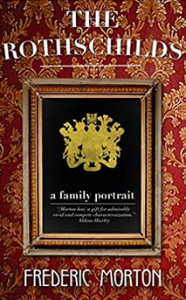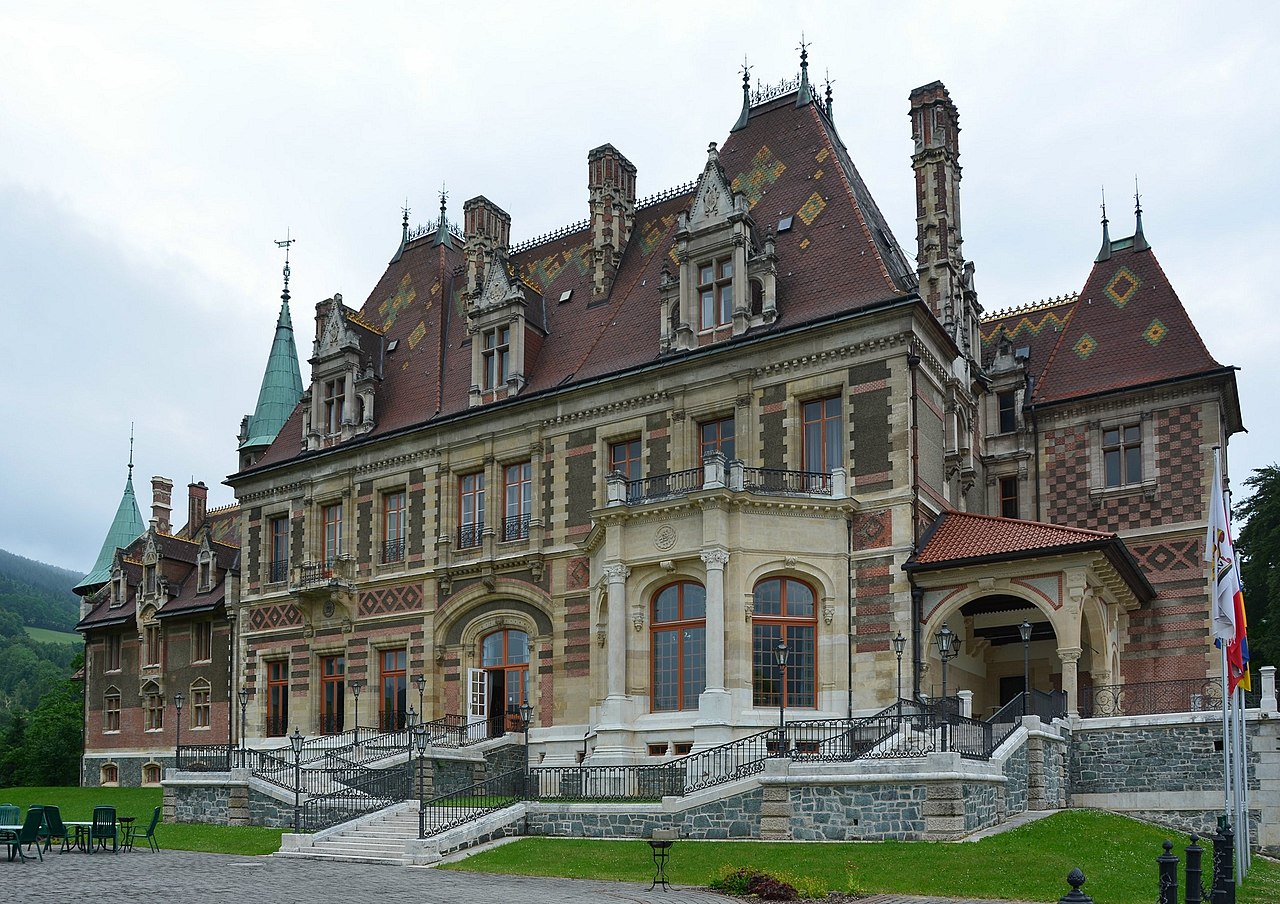While sorting through and getting rid of books in order to accommodate a new item of furniture I came across “The Rothschilds: A Family Portrait,” which I had given to my father for his birthday in 1965. It still bears my dedication, “To Daddy, with love,” reminding me of his association with the English branch of the Rothschild family through its patronage of the Jewish charity of which he was the Secretary.
So I took up the faded pages and began to wade through the history of the complex relationships and even more complex business and financial concerns of that august family. The author has done an admirable job of presenting its history, starting with its humble origins in the Jewish ghetto of Frankfurt, blossoming by dint of intellectual brilliance and strong family ties into a mammoth financial and business enterprise on the international stage. The starting point was in 1764 when the founder of the family fortune, Mayer, returned home from a yeshiva near Nurnberg where he had been sent to study to become a rabbi. When both his parents died and the payment for his studies ceased, some relatives secured an apprenticeship for him in the Jewish banking house of Oppenheimer in Hannover, one of the network of principalities that later merged to become Germany.
In Frankfurt, Jews were restricted to living in the ghetto, an area consisting of a single dark alley near the city wall. The ground floor of some of the houses served as shops, mostly selling second-hand goods, and Mayer Rothschild joined his two older brothers in this trade. He developed an interest in old coins and medals, managing to engage the interest of the local ruler, Prince William of Hesse-Hanau, as well as setting himself up as a currency exchange agency. This eventually enabled him to serve as private banker and money lender to the local aristocracy.
 Mayer married Gutele Schappner, and the couple went on to produce 10 children, five sons, and five daughters, though another 10 babies did not survive. As the children, and particularly the boys grew, Mayer benefited from their services delivering messages and packages to his various clients, many of whom were in high positions. The boys displayed a combination of mental acuity and the ability to engage in transactions that gave Mayer considerable advantage in his business dealings. The eldest, Amschel, went on to eventually become the treasurer of the German Confederation, Salomon, the second, achieved the same exalted station in imperial Vienna, Nathan, the third, rose to have more power than any other man in England; fourth was Kalmann, who “wound the Italian peninsular around his hand,” and finally Jacob, who was to lord it in France during Republic and Empire.
Mayer married Gutele Schappner, and the couple went on to produce 10 children, five sons, and five daughters, though another 10 babies did not survive. As the children, and particularly the boys grew, Mayer benefited from their services delivering messages and packages to his various clients, many of whom were in high positions. The boys displayed a combination of mental acuity and the ability to engage in transactions that gave Mayer considerable advantage in his business dealings. The eldest, Amschel, went on to eventually become the treasurer of the German Confederation, Salomon, the second, achieved the same exalted station in imperial Vienna, Nathan, the third, rose to have more power than any other man in England; fourth was Kalmann, who “wound the Italian peninsular around his hand,” and finally Jacob, who was to lord it in France during Republic and Empire.
When Napoleon assumed power in France and elsewhere he appointed the financial agency of Rothschild and Sons as the legal successor to Prince William’s exchequer, enabling the Family to collect debts owed to the Prince throughout Europe. During this period gold served as the principal means of payment, and the Rothschild agency managed to collar a considerable amount of it. In September 1806 the status of the Rothschild agency was changed, with its shares being held by Mayer together with his sons, who were by now spread out throughout Europe. In England Nathan spotted the opportunity provided by the need to finance military operations against Napoleon in Europe, using his financial astuteness and family connections to raise funds and spread the risk. Among his august clients was the East India Company, whose entire stock of gold bullion he purchased, enabling him to provide Wellington with the wherewithal for the battles ahead while at the same time creating tremendous wealth for the Family.
Mayer and his sons were able, by dint of their diligence and brilliance, to build a financial empire extending throughout Europe and the world. The Rothschild sons and grandsons tended to marry their Rothschild cousins and nieces, ensuring the retention of the Family fortune and genetic propensities, while the female members of the clan often married into the European aristocracy. The Family initiated and financed the construction of roads and railways all over the world, were instrumental in the acquisition of the Suez Canal by Britain and have been instrumental in the creation, settlement and establishment of Israel, in addition to their extensive charitable work, which often remains anonymous. While the palaces built as residences by the Rothschilds in London, Paris, Vienna, and elsewhere, have in many cases been sold or converted into hotels and embassies, and some of their country estates flourish under a different aegis, the Rothschild Bank is still a significant institution in the financial world, having endured world wars and economic crises. In recent generations Rothschilds have been leading botanists and zoologists, collectors of fine art, and patrons of the arts and sciences. The aura of wealth and indulgence associated with the name of Rothschild endures until this day among Jews and gentiles all over the world.
Republished from San Diego Jewish World
























